Our Boats
Our festival wouldn’t be the same without the spectacular boats who visit. We invite scores of historic and classic vessels to fill the harbour, re-creating the sights, smells and flavour of what was once an important, vibrant fishing port. Traditional wooden vessels, (from Brittany to Falmouth) are rigged with spars and tan sails and line the harbour wall. They then set out for an impressive parade of sail over the three days, a sight that stirs the heart of even the most hardened land lubber.
Boat Owners – we encourage you to please send us your details via the ‘Book your boat’ link on the homepage. We will do our very best to include your boat details on the website or in the festival catalogue.
Please note: the finer details of many of these vessels can be found through their skippers at the festival. As ever, the number of vessels attending is governed by the weather and we apologise in advance for any descriptive mistakes.
THIS YEAR’S BOATS – The boats listed under ‘this year’s boats’ are those that attended the 2024 festival.
This year's boats
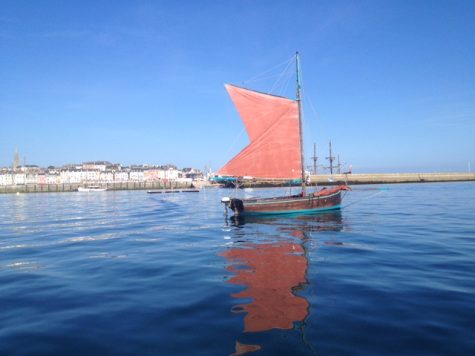
Alf Smythers
Alf Smythers is a 26ft Truro River Oyster Dredger built between 1966 and 1972. She’s a carvel constructed gaff cutter, based from Mylor and owned by the oysterman, Chris ‘Ranger’. Check out AlfSmythers.co.uk. Not only does Ranger dredge for oysters during the season (www.faloysters.co.uk), he can also be seen occasional ‘racing’ Alf in the Carrick Roads. She’s an open boat, with no inboard engine and even sailed to Douarnenez several year back… impressing the Bretons no end! Also, if you want to see the future restoration of the 150 year old oyster boat ‘Shadow’ (the oldest survivor), then please support her restoration via Shadow1870s.co.uk.
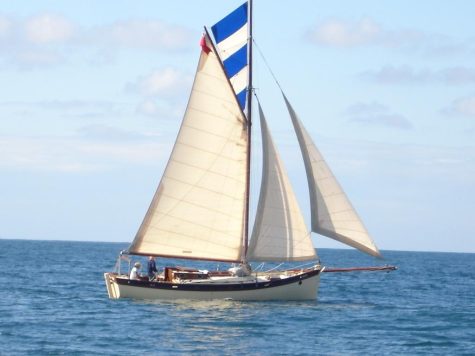
Alice
Alice. A Heard 35, was first launched in 2000. Phil and Liz Cogdell bought her in 2022 in Antigua, entered Antigua classics in 2023, then sailed her home. She’s now had a complete refit and I’m sure there’s many an adventure ahead.
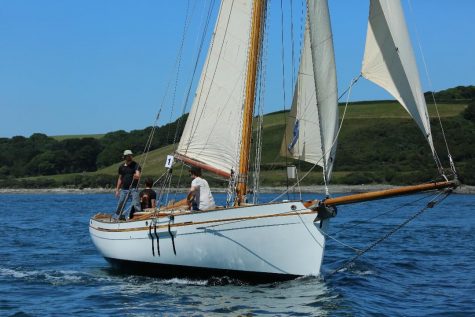
Alva
Built by Ben Harris & Co at Restronguet, Cornwall, Alva was launched in 2011. Designed by Paul Gartside along the lines of the later Falmouth Quay Punts, she is a 30 ft gaff cutter that’s fast, seaworthy and immensely strong. With full headroom, there’s also accommodation for three adults and two children. Construction is larch on laminated pitch pine and steamed oak frames. Cedar decks, cabin-sides and capping rail are iroko, cockpit and trim are teak, pitch pine interior and bronze and copper fastened throughout. She looks spectacular, as does all the traditional vessels that Ben has built. www.benharrisboats.co.uk
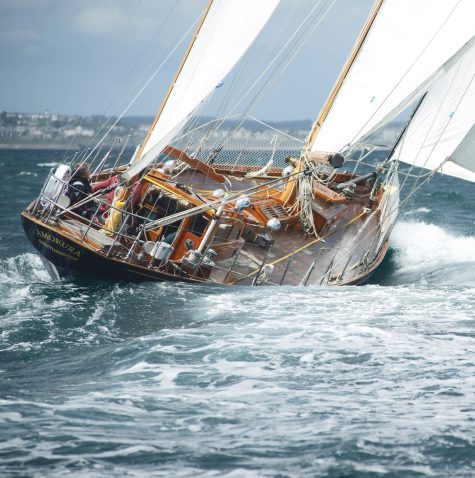
Amokura
The 50ft Amokura was built in 1939 for Major (later Sir Ernest) Harston, ADC to Lord Mountbatten. Renowned designer Fred Shepherd designed her and supervised the build, which took place at the yard of AH Moody & Sons Ltd, at Swanwick in Hampshire, UK. She was later owned by the author George Millar who wrote extensively about her in his book Oyster River describing a summer spent cruising in the Gulf of Morbihan in the early 1960s. Amokura was later sold to Richard Carr, of the Carr biscuit family, who re-rigged her then sailed her extensively in the Mediterranean through most of the 1970s. In 1980 she was returned to Moody’s yard and her interior was stripped out to enable the structural beams to be reinforced and refastened. A new interior was installed under the direction of designer John Mumford and following relaunch Amokura was sailed to the Caribbean and the US East Coast. She returned to the Mediterranean before being brought back in the late 1990s to the UK for a refit at the International Boatbuilding Training College (IBTC) in Lowestoft. This included a light oak interior installed in keeping with her original construction. She spent the early 2000s cruising mainly in the UK before moving to the Mediterranean in 2007. In late 2012 Amokura sailed to Cockwells yard in Falmouth, UK for refit work including replacement of the deck. She then moved to Palma de Mallorca, Spain, before returning to Falmouth in 2015 for further improvement works with Butler & Co at Penpol, in Falmouth, UK. This included replacement of her wooden keel and a new wooden spars with a sail plan designed by the late Theo Rye. Further extensive works were undertaken in winter 2018-19 with repair and reinforcement of her structural frames, rewiring and a new engine. With dark blue topsides and the addition of a symmetrical spinnaker Amokura has a new look for 2019. She was entered in the two-handed class of the 2019 Rolex Fastnet Race, crewed by Paul Moxon and Steve Jones, achieving qualification in the RORC Myth of Malham and Volvo D2D races. She is now based in Falmouth and owned by Paul Moxon. www.amokura.info
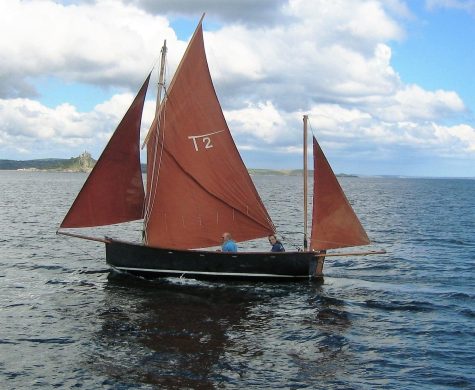
An Hogh Dhu
An Hogh Dhu is an 18ft Mevagissey tosher built by Terry Heard in 1974. She is an open boat, with a 6’6” beam, 3’ draft and carries sail number ‘T2’. With a standing lug main, mizzen and jib, she was originally called the Black Pig and is owned by Nick Phillips of Penzance.
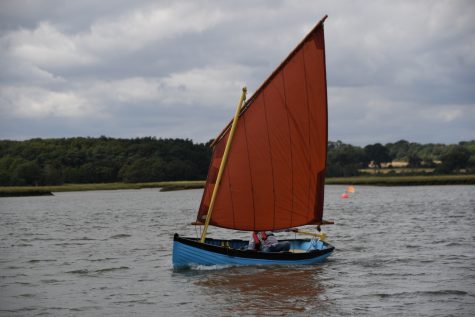
Atlas
The original Atlas was built in 1895 to take bricks to London from Cremer’s brick fields at Oare Creek, Kent. After her original barge boat wore out, another 14ft barge boat was built for her in about 1949 by the Cremer’s foreman, shipwright Bill Gregory. He had spent a life time perfecting this type of boat. The barge Atlas was sold to the Westwood family who lived aboard her and used her for pleasure trips from Wargraves on the Thames. Eventually the barge boat Atlas finished up in Sarah Westwood’s garden in Shotley, upside down and rotten in the bottom. The boat was given to Robert Simper in 2017, who then had her rebuilt by the Pioneer Trust, Brightlingsea. Since then the barge boat has been sailed on the East Coast and taken to Brittany, Looe and the North Norfolk coast. Some fibreglass hulls of the Atlas have also been made.
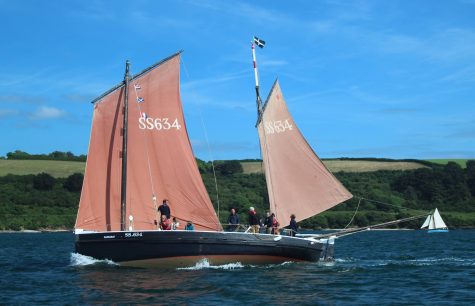
Barnabas
Barnabas is an 1881 40ft St Ives Mackerel Driver. She is the only survivor from the thousand strong fleet of lug rigged seine and drift net fishing boats, registered at Cornish ports at the turn of the 19th century. She underwent considerable renovation in 2005 and is now sailed as one of four traditional boats within the Cornish Maritime Trust. In 2015, she successfully circumnavigated the UK, recently saild in Scotland and Ireland and attends local festivals, as well as several in Brittany. There is an active community that sail and maintain her, generally based from Newlyn. Membership and sails are very affordable. www.cornishmaritimetrust.org

Beth
Beth is a 33ft very capeable ‘go anywhere’ steel Keyhaven gaff Yawl. She was one of six designed by Laurent Giles that includes a lifting keel, legs and a tebernacle mast. With a traditional looking sheer and wooden topside, she’s sailed extensively in Cornish waters, Scilly, Brittany and Southern Ireland. Owned by ‘Stretch’ Mark Drew and based from Newlyn.
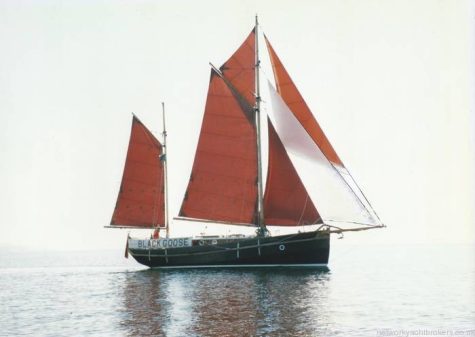
Black Goose
Black Goose is a 30 ft Cornish trader, with traditional red sails, is a gaff ketch and has a mizzen. Built by Cornish Crabbers, owned by Brian Budden and based in Penryn.
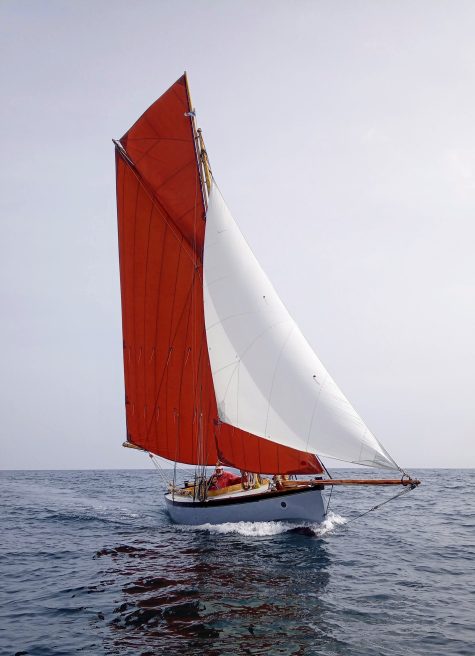
Blue Jacket
Built as a working fishing and shrimping boat in 1894 by Arthur Payne in his own yard, Summers & Payne, Blue Jacket (originally ‘Helen’) is 21ft Itchen Ferry. These capable boats were not generally used as ferries as the name suggests, but took their name from the village Itchen Ferry on the Southampton Water. Here, the fleet had moorings and many were built. No early history is known as the yard and records were obliterated by wartime bombing. Blue Jacket seems to have been designed with an eye to the fierce summer racing of the era, as she has more rake and draught to her straight keel than average. This helps her stand up to weather better when carrying a boomed mainsail. The older typical rig was boomless – rather like the East Coast Bawleys. But for racing, they were kitted out with large boomed sails, which no doubt contributed much to their reputation for being heavy on the helm. By 1920, Blue Jacket had acquired a low cabin top and was registered as a yacht. In the 1930s she was bought by the great designer Uffa Fox, who was sufficiently impressed to dedicate a chapter to her in his 1938 book “Thoughts on Yachts and Yachting”. In 1983 she was rescued from a pitiful state with no bowsprit, bermudan mainsail and a larger cabin – being converted back to gaff rig with yet another cabin and with an inboard engine. After buying her in 2004, she was returned to as near original semi-open configuration as was possible to determine. Since then, Blue Jacket has proved a fine family boat and, as Uffa Fox concludes, “a thing of beauty and a joy for ever”. Owned by David Ellis and based from Falmouth.
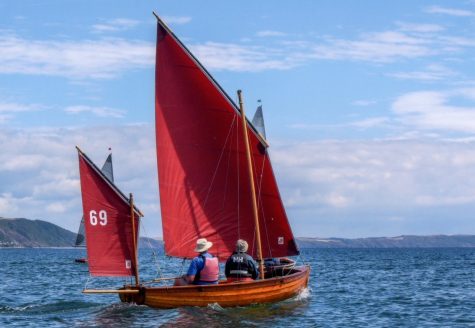
Brenda Jean
Brenda Jean is a larch planked, clinker built rowing boat with a Beer Lugger rig and was launched in 1999. She was built by Justin, who sailed her for the first ten years and was then taken on by Justin’s dad Chris and his wife Heather. They were regular attendees of both Mousehole and Looe regattas until last year when Chris sadly passed away. Justin and Heather will be sailing her this year.
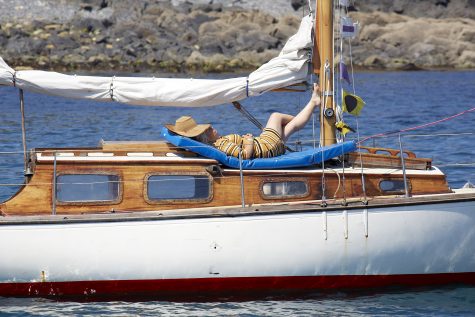
Burgundy
Burgundy is a Nicholson 26ft South Coast One Design, built in 1956. She’s a sloop with a fractional rig. She won all three races in the 2014 Sea Salts and Sail under 26ft event and was awarded the Low Lee Trophy. Owned by Andy Tanner, she’s based in Newlyn.
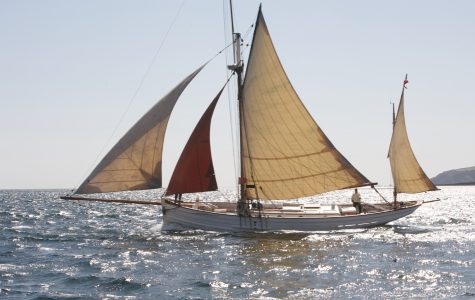
Clio Marie
Clio Marie is a 46ft (LOD) Grimsby Smack built around 1895. Originally called Bertha, she had an extensive rebuild by Sid Fisher in Poole over a 10 year period and renamed Bertha Fisher when relaunched in 1985. Sid Fishers family had been boat builders for many generations and Sid, assisted by his father felled the oak trees in the autumn of 1975 and planked and seasoned them for five years before starting the rebuild. She was sailed as a yawl for many years, but is now reverted to a gaff cutter rig. She is massively built using 1 and ¾ inch oak planks on 4’’x4’’ oak frames, doubled below the waterline and mostly copper fastened. She is based in Falmouth and owned by Shane Carr.
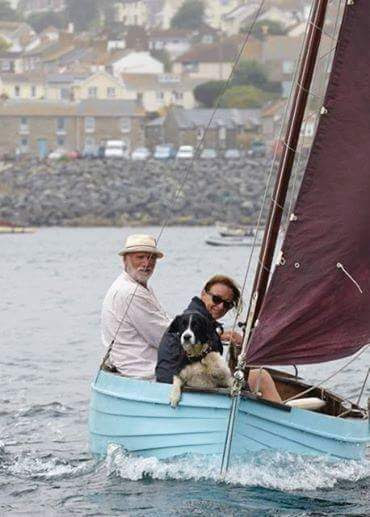
Dawn
Dawn was built by Dauntless Boats on Canvey Island, (Essex) initially as a rowing dinghy but converted into a fine sailing craft by Allan Staley of Faversham, during the 1960s. She’s been trailered to the Brest and Douarnenez festivals and many in Cornwall. Dawn is 12ft long with an enormous 18in bowspit! Gaff rigged with Wilkinson sails from new. In 2022 she had a big refit by James Baker in Falmouth, (below and above decks!) and according to Spider, sails like a witch! Owned by Nicholas and Leila Hardy.
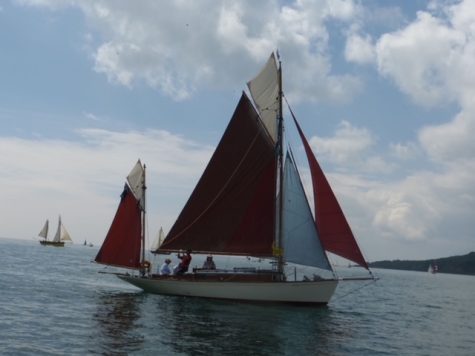
Devon Maid
Devon Maid is 30 ft and was built as a dayboat in 1914 at Beasley boatyard on the River Itchen mainly from larch and cedar offcuts from their steam yachts. She was one of the many boats sunk on purpose in either the Beaulieu River or the entrance to Lymington during the 2nd World War. The cabin was added 1928 and an engine with a port-side wing propeller 1934. In 2010 cabin reconfigured for 2 berths and a galley. She has had two names before becoming Devon Maid: Winkle and Bingle, according to the 1952 Lloyds Register. She was found in the Alderney Race in 1958 by the current owner’s father, a Guernsey pilot, quite happily sailing along with no-one aboard. The owner had left Southampton and presumably had been lost overboard sometime during the night or early morning; Devon Maid had come down between Alderney and the French peninsular on the west-flowing ebb. Owned by David Bisson.
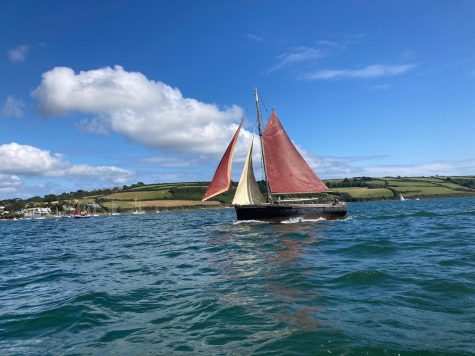
Doormouse
Doormouse is a 23ft Percy Dolton designed gaff cutter. She’s based in Penryn and owned by Ella Henshall.
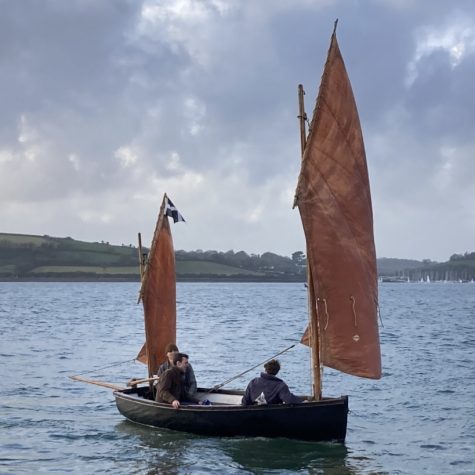
Dreckly
Dreckly was built in 1998 by Martin Heard and is a 15ft GRP Cornish sailing punt with a standing lug rig. One size down from a Picarooner, she’s pretty seaworthy and when the wind’s in the right direction, she has a surprising turn of speed! Owned by Matt Brunyee in Penzance.
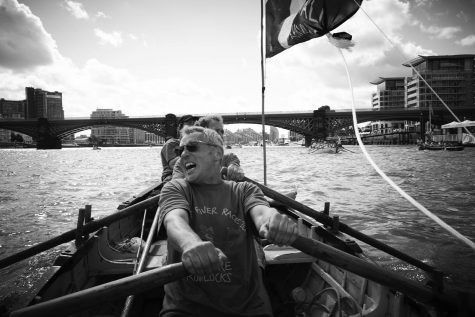
Drekly
Drekly is a genuine 16ft “Tidewaiters” punt and was used to put pilot or customs officer aboard ships, requiring bill of landing inspected. Possibly from Penzance in the early 1900’s, though only a guess. Painted sea green originally. Clinker built of Cornish elm. Still working as a service boat and is for hire from Richmond, River Thames. She now has a spritsail main and is owned by Mark Edwards. She has been to SSS many times before and has even been rowed in the Great Thames River Race by a group of guys from Mousehole.
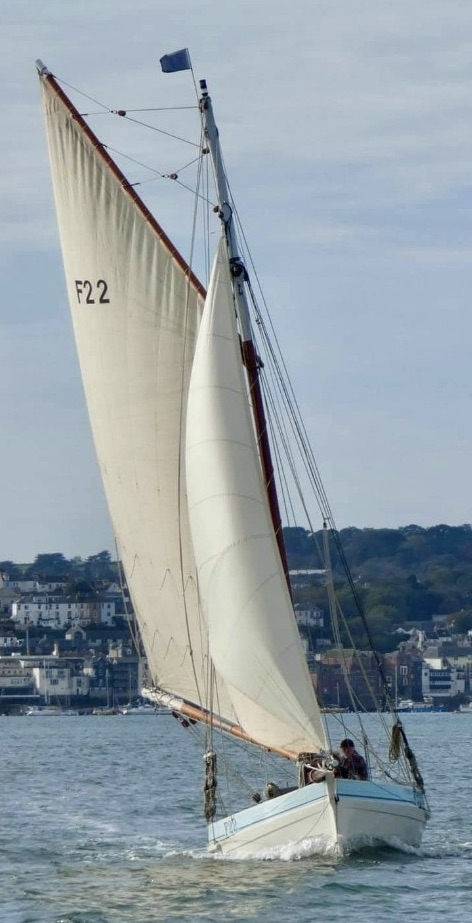
Emma
Emma is a Bawley built by shipwright Thomas Bundock in the late 1840’s as a wedding gift to his daughter Emma. She was registered in Maldon as MM121, as MM 297 in 1875 and was sold in 1901 to Charles Whorlow of Whitstable. Her clinker planking was overlaid with carvel planks at Conyer in 1916 and then sold to the Gregory family of Faversham in 1928 and given the number F22. She fished until 2006 and is currently owned by Richard East and based in Falmouth.

Er-Yn-Dauz
Er-Yn-Dauz is a 15ft Lymington Scow racing punt, with a balanced lug rig and dredging ‘wink’ fittings. Probably built and the 1950’s, she was lying in a barn at Maenporth for thirty years until about 2014, when she was fitted with a new stem and frames. Owned by Jonathan Fletcher, ‘Er-yn-Dauz’, is named for his wife.
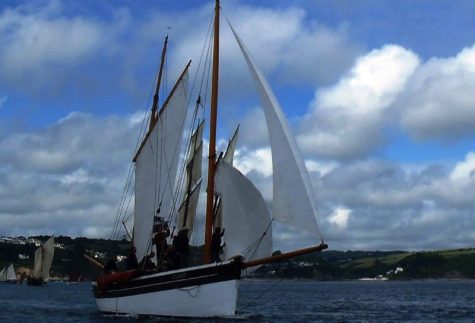
Gladys
Gladys was built in 1901 in Peel, Isle of Man. Referred to as a Nobby, she originally had a standing lug rig when fishing for herring. She’s 40ft long, with a draft of 5’ 5’’ and a beam of 11’ 5’’and has been converted to a dipping lugger. Based in Penryn, she’s fast and graceful and owned by Charlotte Whyte. Also, check out www.bluerivertable.co.uk for fine dining aboard Tethra, a converted 36ft mobile Cornish fishing boat.
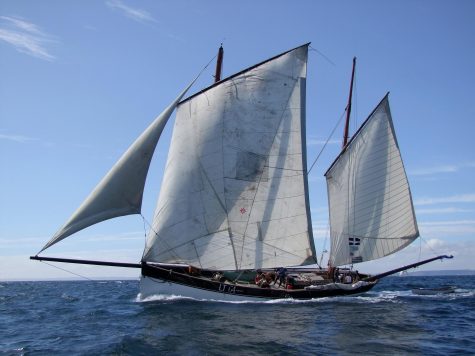
Gleaner
Gleaner (LT64) is a graceful 60ft twin-masted vessel and the only dipping, lug rigged Lowestoft Drift Netter sailing today. Originally built in 1878 by Richard Kitto’s yard in Porthlevan, Mounts Bay, she was abandoned on the hard in Germany in the 1970’s. Spike Davies and an incredible community of skilled friends brought her back to life and after nearly 50 years, she made the 2018 SSS her first proper passage.
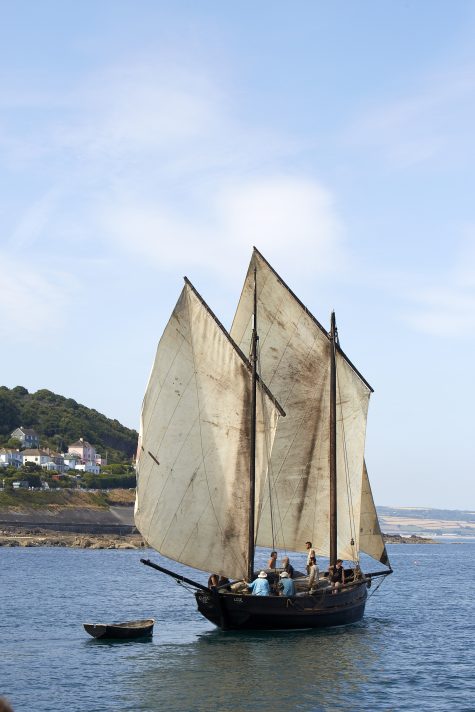
Guide Me
Guide Me was built in 1911 by Peter Ferris of Looe and started life as a pilchard driver and long liner in Cornish waters. She was sold in 1966, re-named Guidez Moi (FY233) and then ended up in the Channel Islands, later Portsmouth. Jono and Jude Brickhill purchased her in 1977. During the full restoration, they found her christened name Guide Me, carved into the original bulwark. She is based in Gweek, Cornwall. This twin-masted dipping lugger is in a league of her own and powered entirely by wind (or oars!). She’s 40ft in length, though overall 72ft, with a 12’10” beam and 5’10” draft. Being a very fast sailing vessel, carrying ample sail, she’s generally out front in most of the classic races. In 1988, the Brickhills, including four children sailed via Douarnenez Festival to Spain, Portugal, Tenerife, La Palma and then on to Brazil. They returned via Cape Town and then later back to America.
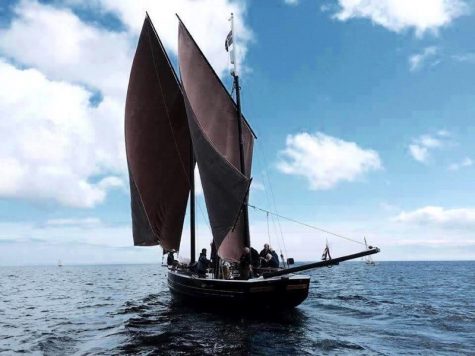
Happy Return
Happy Return is an original 40ft Cornish Lugger built at Kitto’s Yard, Porthleven in 1904. She was the oldest registered fishing boat when the owner decided to decommission her in 1998. She has a beam of 13’ 6’’ and a draught of 7’. She was restored by ‘The Mounts Bay Lugger Association’ and regulary sails out of Penzance. www.happyreturn.org/
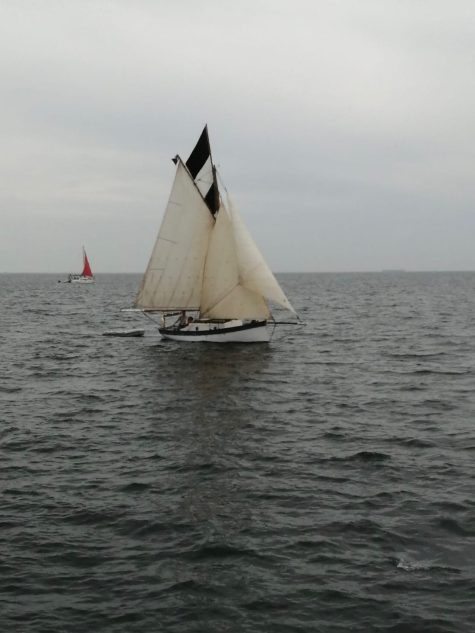
Juno
Juno is a 23ft 1980’s fiberglass cutter built by Terry & Martin Heard of Mylor. She is owned by Jim Wilkinson and sailed out of Penzance. With a gaff rig, she’s very capable, as well as a beautiful traditional looking vessel.
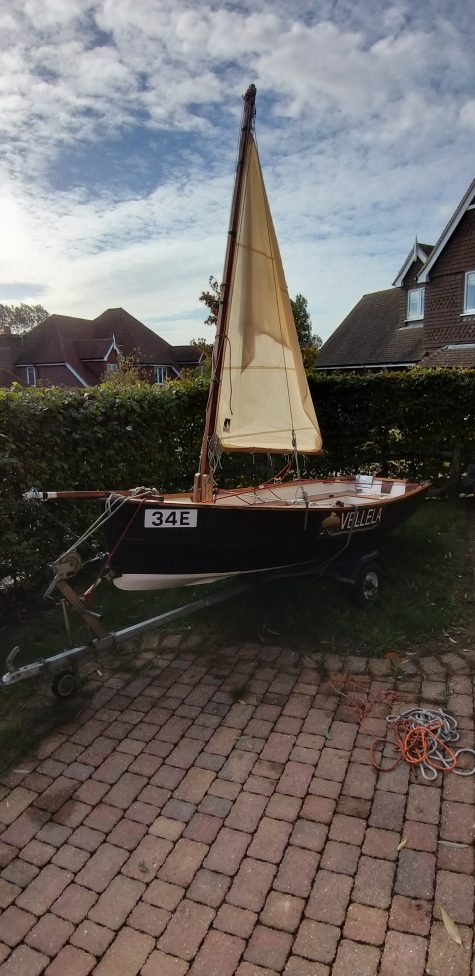
Kairos
Kairos is a Selway Fisher Highlander 12 with Sprit rig. She’s 13ft by 5ft, draws about 8 inches and is only 10 years old. Home built from marine ply, she looks older as painted black and has her original Norfolk Broads number on the bow. Owned by Vernon Holt.
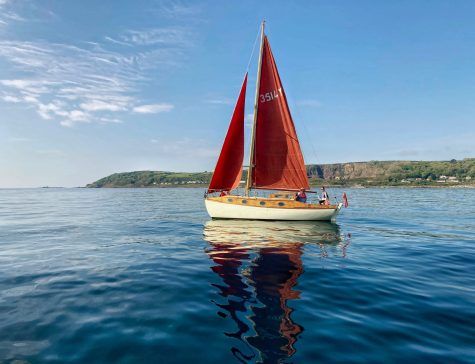
Kittiwake
Kittiwake is a 1967 Maurice Griffiths Thames Bawley Bermudian Sloop. She is bronze fastened, with carvel mahogany planked on Iroko centreline structure, over rock Elm frames. She is owned by Amber Trasahar and her home berth is Newlyn. Prior to this, she was at Bucklers Hard, Beaulieu and according to local Portsmouth sailors, in hushed tones of awe, she apparently crossed the Atlantic. With much affection she is lovingly maintained here in Mounts Bay.
Kittiwake
Kittiwake – The boat is a 1999 Ian Oughtred Wooden 18′ gaff rigged yawl. Double ended with twin centre plates it was built by the Lyme Regis School of boat building. Cold Moulded mahogany and epoxy sheathed.
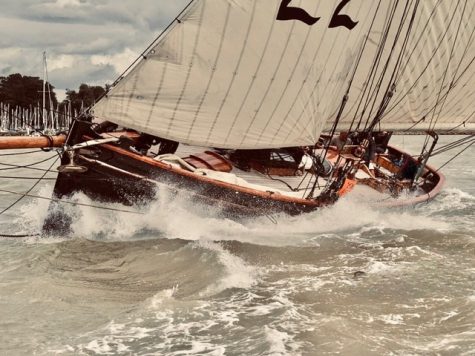
Letty
Letty is a 1905 original E. Rowles Bristol Channel Pilot Cutter, built at Pill near Bristol. She’s undergone a full restoration in Falmouth and has been sailed extensively over the last few years by her owner, Steve Cogdell. She’s fast, powerfull under a full rig and traditionally, one of the prettiest boat’s you’ll see on the water.
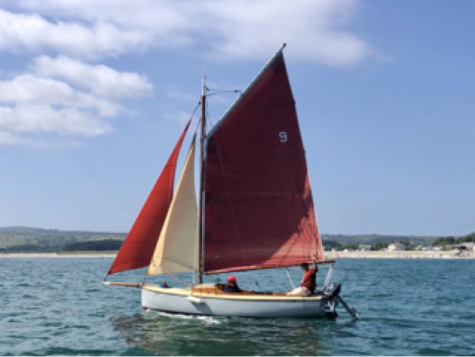
Lily
Lily is a traditionally looking Memory 19, which is gaff cutter rigged. Built around 1977 in GRP, she’s a replica of a 1925 Brightlingsea fishing boat. Owned by Paul Elliot, she’s sailed out of St Michael’s Mount.
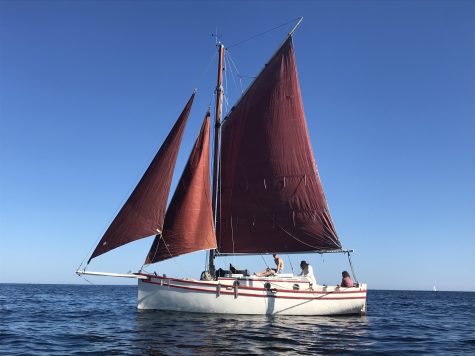
Lowenna
Lowenna is Cygnus Tamarisk, 29 built in 1980 with a gaff cutter rig. She is owned by Ollie Hughes, moored in Penryn and has a 9.8ft beam, 4.6ft draft.
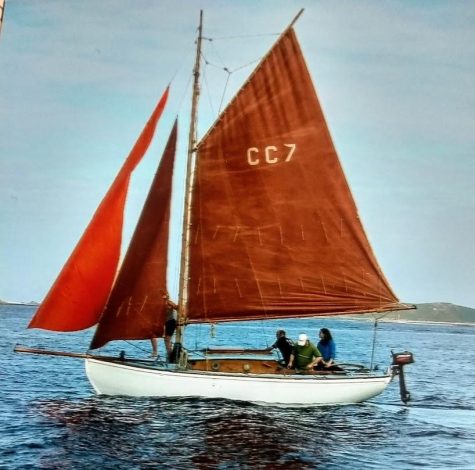
Lufra
Lufra was built in 1931 by Everson’s at Woodbridge on the River Deben. She’s a 21ft Deben Cherub, No7 of 12. She was due to be cut up after storm damage on the Scilly Isles, where she was subsequently saved for a ‘rainy day’s’ restoration project. When lockdown came, James Fletcher made a start replacing several planks, sections of keel, ribs and caulking. She was due to be relaunched in 2022 in time for the Scilly ‘crossing’ and to Sea Salts & Sail, but never left!
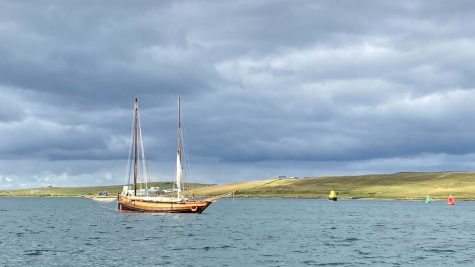
Maggie Helen
The Maggie Helen was built in 1904 as a fishing boat. She had been sitting in storage since 2007 after the historic vessel, then known as Loki, had been bought by Shetland Amenity Trust. The current owner is Benoit Cayla (Rose of Argyll and Swallow), who comments that he became interested in the historic vessel because of her Zulu style hull. She has a raked stern for protecting the rudder, but a straight-stemmed lugger style bow. This provides more deck space in crowded ports and was a popular choice for herring boats in the late 1800s. At one point there were hundreds, but the style is quite rare now.
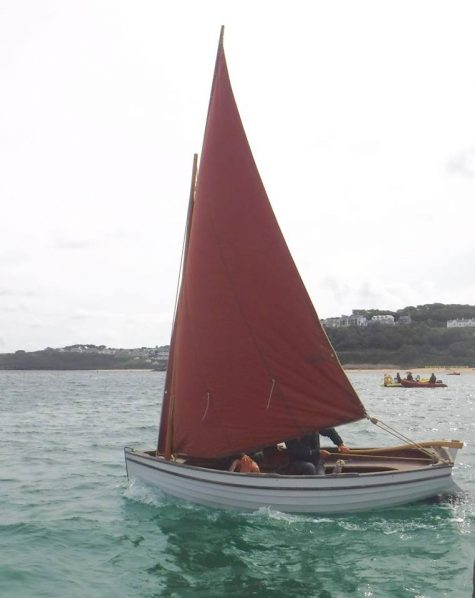
Maia
Maia is a St Ives Sailing Punt. Built by Jonny Nance in 2015, she’s traditionally constructed with oak keel and douglas fir clinker planking. She has no centre board or dagger board and relies on her hull shape and shallow full length keel to sail to windward. She has a standing lug rig on an unstayed mast. Her overall lines were developed from those taken off one of the last St Ives punts in 1975. Sailing out of St Ives, she is owned by Scott and Tom Bowring and is 11ft 6’ long and only draws 1ft.
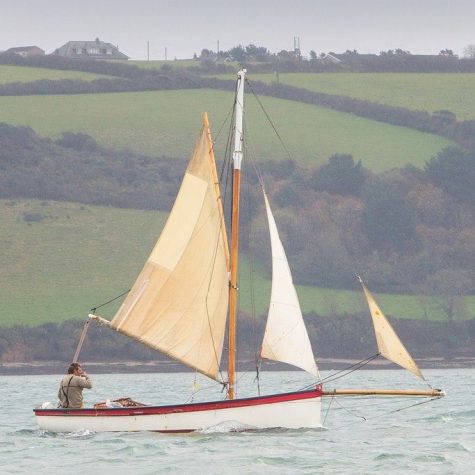
Mistress
Mistress is a 20ft Heard tosher built in 1983 and owned by Adam Spargo. These boats are famous for dredging oysters in the Fal. Apparently, there may even be a top sail made in-time for SSS!
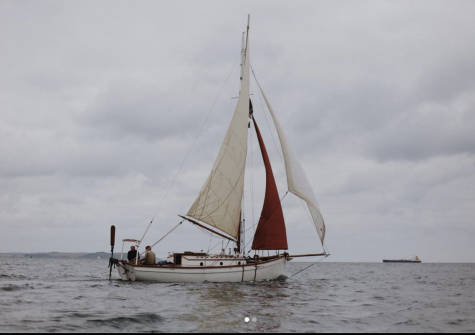
Morwenna
Morwenna is a 28ft Heard with a gaff cutter rig. She is owned by Tom Trant and is sailed from Penryn.
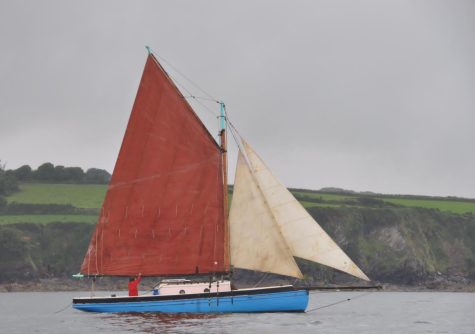
Moya
Moyà is a 34ft Morcambe Bay Prawner owned by Dougal Bird and kept in Gillan Creek.
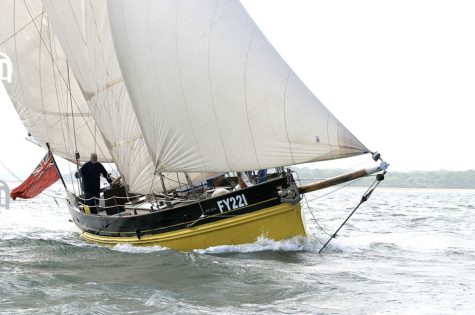
Our Boys
Our Boys is a 42ft dipping lugger, built in Looe in 1904 by Dick Pearce for the Woodrow Pengelly family. Named ‘Our Boys’ after the first owner’s seven sons, she was involved in commercial drift-net fishing for pilchards and mackerel from Looe, until decommissioned in 1978. In the 1960s, she was skippered by Bill Pengelly, one of only five motorised former luggers still working from Looe. She has a wonderful history and has been owned by the Darts, Mike Cotton, the Greenwoods and Phil Cogdell. She’s now based in Penryn and owned by Robert Demaus.
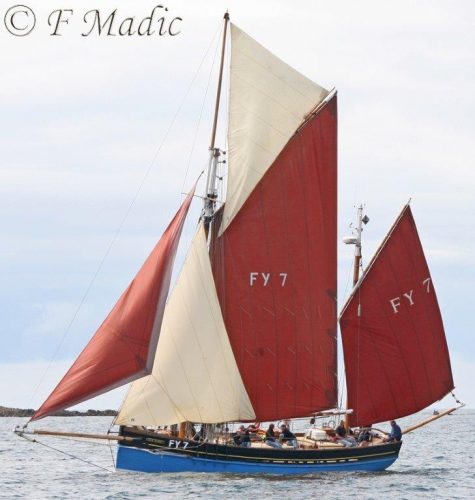
Our Daddy FY9
Our Daddy is a 45ft Lugger (75′ with bowsprit and bumpkin) and carries 2,500 sq feet of sail. Built for (£435) in Looe in 1921 by Dick Pearce for the J E Pengelly family, she was skippered by their son Alfred John. She fished for some 65 years in the pilchard, mackerel and later shark fishing industries. She was the last sailing Lugger to work out of Looe and was then owned by Mike Darlington and Stuart Murray. Mike, who fished on the boat with the legendary Alfred John Pengelly said: `A J told me: “One day, she will be yours.” But he forget to say it would take 21 years…’ Our Daddy has been re-built as a stunning classic with a Dandy Rig and since 2014, owned by Steve Styles and Tim Sunderland.
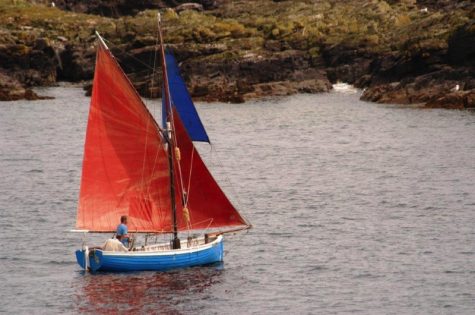
Our Kate
Our Kate is a graceful 18ft Gaff Rigged Pilot Cutter, built in Salcombe, Devon by Edgar Cove in 1910. She has been owned by the Tyler family for over 40 years and is still sailed by the family from Mousehole. She has ample history and has even a reference picture included in the book, Conserving Historic Vessels, produced by National Historic ships.
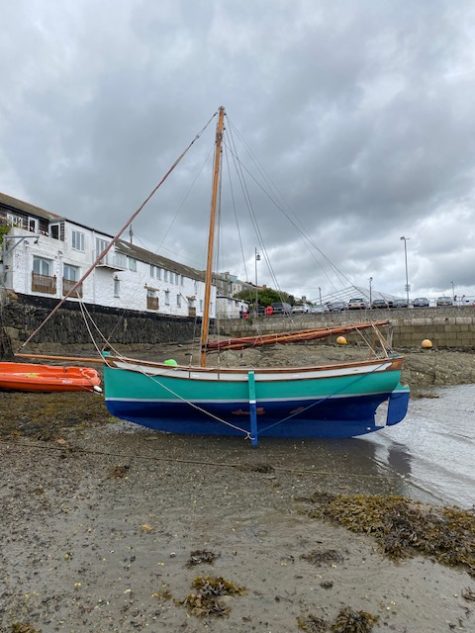
Peta
Peta is a pretty gaff rigged 18’6” Heard Tosher built in Mylor in the 1980’s. Legend has it, that her mold was made from an old fishing boat called YoYo build in the 1800’s.
At some point, someone cast a lead keel and bolted it to the bottom of the boat ,so she’s a bit deeper and stiffer than some of the other 18 footers. Owned by Kyle Abingdon and sailed from Falmouth, Peta is a Greek girls name but influenced by the seminal Reggae artist Peter Tosh.
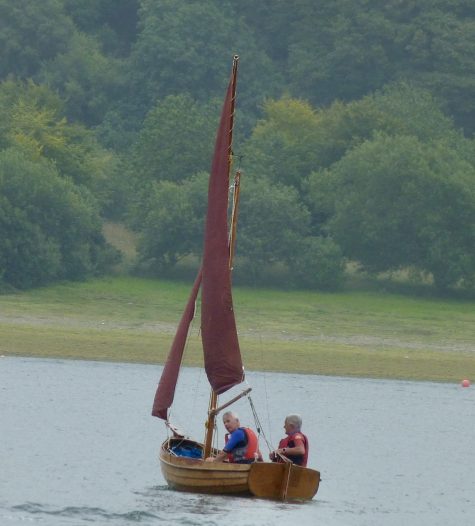
Polly
Polly is a pretty 12 ft McNulty Longstone design. She is gaff rigged and clinker built of Mahogany and Oak on the Tyne in 1987. Owned by Kevin Burnham and trailered from Devon.
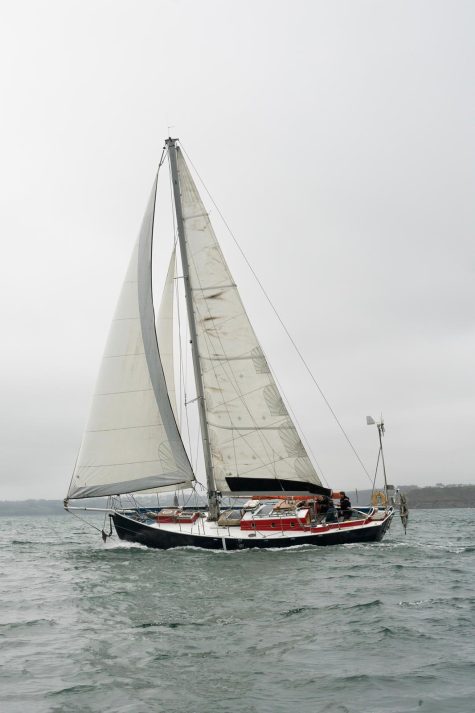
Polly
Polly is a 42ft Laurent Giles, Birdham Cutter. A real sweet boat owned by Felix Gillies Creasey and kept in Penryn.
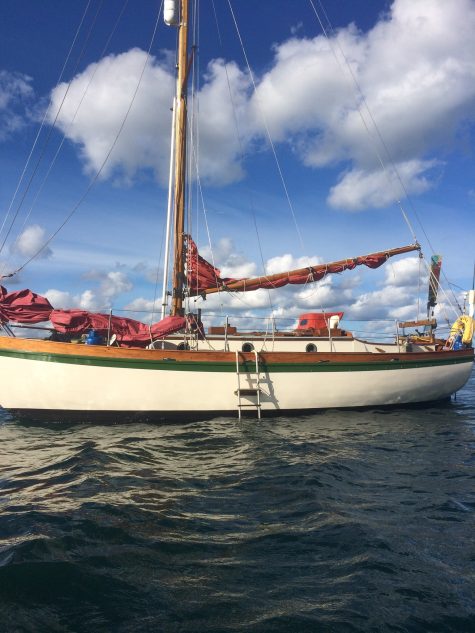
Pomona
Pomona was built in 1956 as a one off 27 ft sloop with long keel. Design by Colín Cowen, owned by Danny Rocca
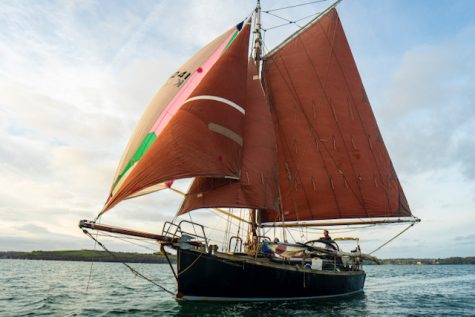
Prudence
Prudence is a Percy Dalton designed 28 ft, hard chinned steel gaff cutter. She is loosely designed around a Falmouth Working Boat, currently moored in Penryn and owned by Harrison Wood. She has a long keel and was built by a fishing boatyard as a one-off in 1980, along with her 25 ft twin that her owners have never tracked down.
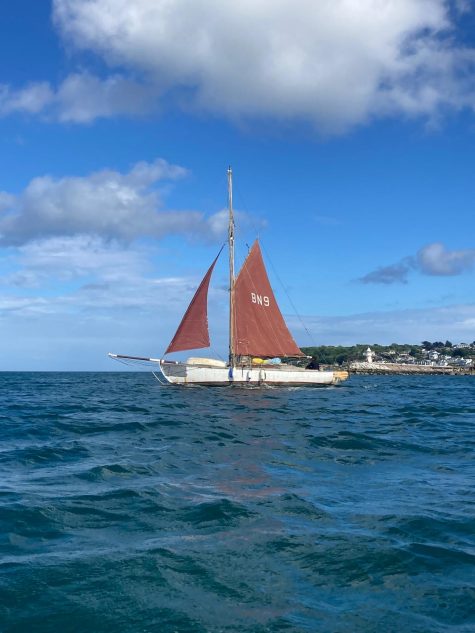
Radiance
Jake Whyte purchased Radiance in 2024. She’s a 37’ gaff cutter, built in 1936 in Boston, Linkinshire. He’s done some work on her this season and his first two festivals will be Brixham for the Heritage Regatta and Sea Salts Sail.
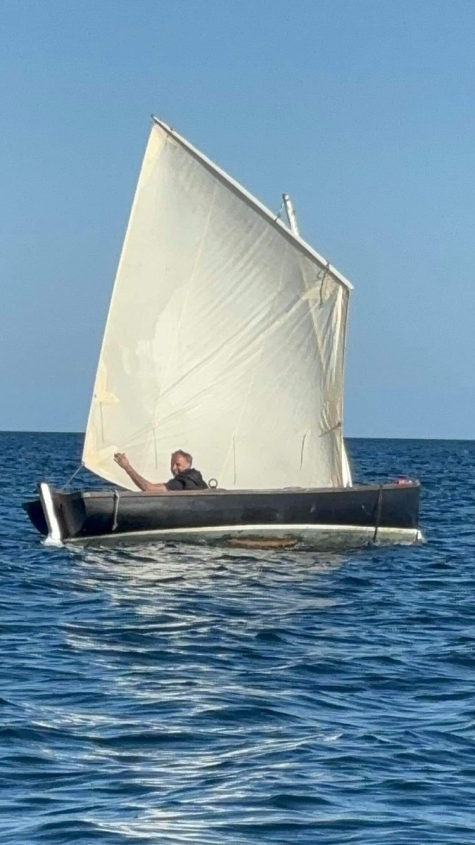
Rasta Girl
Rasta Girl is a 15ft Falmouth oyster punt with lug rig. Owned by Ryker Jeal.
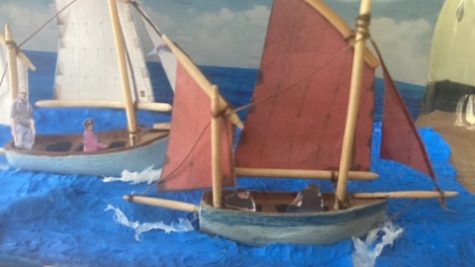
Rebecca Jate
Rebecca Jate is a 15ft Port Issac lugger built in 2003 at Lowestoft. Sailed by Jonny Mills and Ben Munro
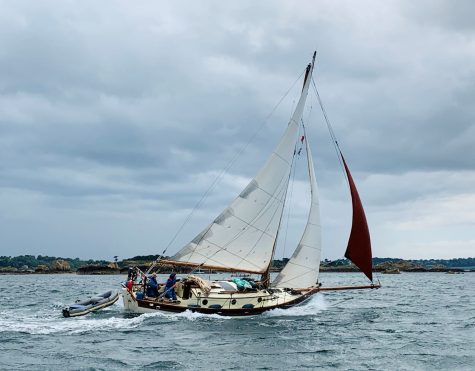
Roxanne
Roxanne is a Percy Dalton / Terry Heard 28ft cutter, built in 1992 by one of Martin Heard’s shipwrights for himself. Subsequently, she spent some years in Holland and then the East Coast. Bought by Martin and Janet Elliott, she’s returned to Falmouth and onto Truro.
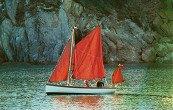
Sea Urchin
Sea Urchin is a smaller version of a Gorran Haven Crabber and built by Percy Mitchell in Mevagissey (or Portmellon) around 1936. Sea Urchin has a Spritsail rig, similar to the Thames Barge, but she’s only 15ft. It’s an unusual rig for this style of boat, but fantastic for down and up wind sailing. Importantly, there’s no boom so perfect for kids. She’s been beautifully restored by owners Richard and Chris Biker and is sailed from Mousehole.
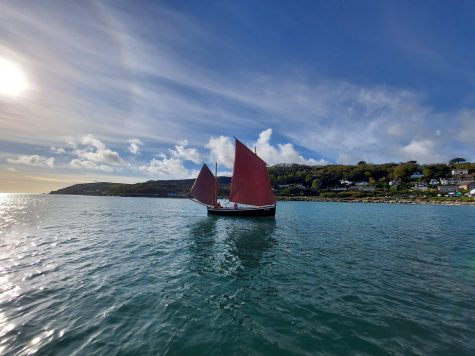
Silver Stream
Silver Stream was built in 2004 by the Falmouth Marine School, however, she’s a true replica of an 1892 Sennen Cove Crabber. The original was registered as PZ468 for the Nicholas family in Sennen. From here, she fished mainly for crabs and lobsters but reputedly sailed as far as the Scilly’s in good weather. It’s believed she was fished commercially until the 1930’s, after which no records exist. She’s now owned by Glenn and Clare Morris and sails as part of the Cornish Maritime Trust out of Newlyn. She is built in the traditional fashion of larch planking on sawn and steamed oak frames, copper and bronze fastened. Spars are of Douglas Fir and the rig follows the original dipping lug design. She is solid, stable and a very capable 22ft 4’’ open dipping lugger. With a 14hp Beta marine engine, she can also be rowed and sculled. A part of Silver Stream’s role within the CMT, is to help train younger members (and keen older members!) to sail a dipping lugger. The trust hopes this eventually gives crew the confidence and experience to skipper a larger more historical vessel, such as Barnabas. The aim of the CMT is to help preserve a fraction of Cornwall’s maritime heritage, by maintaining and sailing four working vessels from the days of sail: Barnabas 40ft 1881 St Ives Dipping Lugger, Soft Wing 24ft 1900 Truro River Oyster Dredger, Ellen 17ft 1882 Gorran Haven Crabber and Silver Stream. We have a lot of fun sailing, but also work closely with our community of members on the maritime history and skills needed to maintain traditional vessels. Our vessels sail from Falmouth, Newlyn and Mousehole. The yearly membership is from £30 each to £40 a family. www.cornishmaritimetrust.org
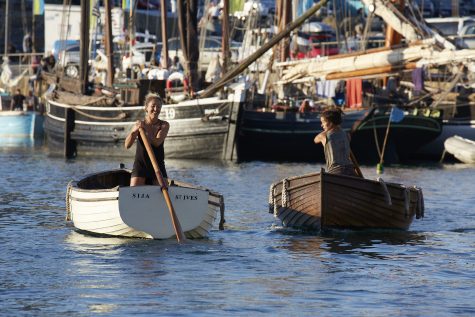
St Ives Sculling Punts
The 13ft St Ives Sculling Punts are owned by the Jumbo Association and were built by Jonny Nance. They are replicas of a typical example built in 1910 for the mackerel boat Jonadab which his father, Dicon Nance recorded in 1975. They are robustly built to withstand a ground sea and flat-bottomed, so they float in shallow water. Originally used to get crew and gear aboard and to land fish, the larger fishing luggers (such as Jonadab) would haul their punts on deck, for their seasonal voyages to the North Sea.
Jonny launched the first replica in 2005 as a tribute to his father which, in turn, inspired the building of the Jumbos. Today the replicas are used as tenders to the St Ives Jumbos and to promote the practice of ‘scullying’. These punts will be used for Saturday’s competitive scullying event.
www.stivesjumbo.com; www.jonnynance.com
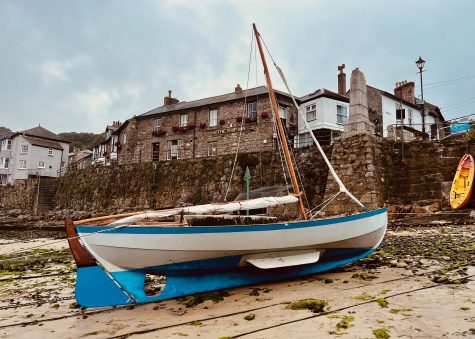
Sweetpea Too
Sweetpea Too was designed and built by the Falmouth Packet Company in 1965, based on a Scandinavian double-ender in an Arctic Tern style. She’s moulded in GRP, is 18ft 5 inches overall with a beam of 6ft 5 inches and a Sliding Gunter rig. A lovely day-sailor moored in Mousehole and maintained in memory of her former owner renowned artist Nigel Hallard.
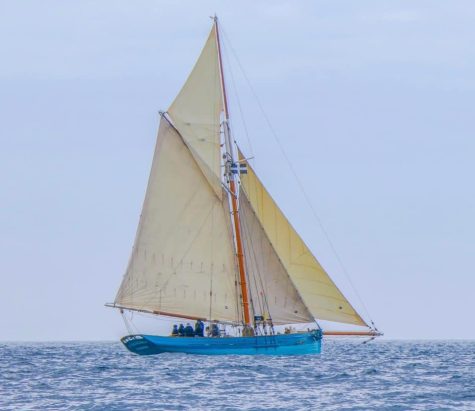
Tallulah
Tallulah is a 22 ton (deep keeled) 44ft replica pilot cutter from Working Sail. She was the 6th to be built by Luke Powell in 2008. Over Sea Salts and Sail, she will be run as an artist voyage with Classic Boat illustrator Claudia Myatt on board as resident art teacher for their guests. The vessel is based in St Mawes and is owned/skippered by Debbie Purser. For further details see https://classic-sailing.com/vessel/tallulah-pilot-cutter/
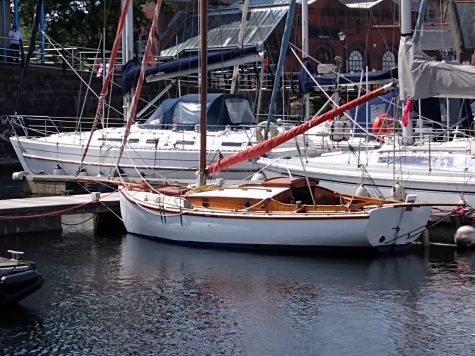
Tamarisk
Tamarisk is a 20ft Hillyard 4 tonner, built in 1938. Alex Evans bought her at the beginning of the year in Pembroke Dock and is currently 1 month in to his journey, to eventually sail her back to Southampton.
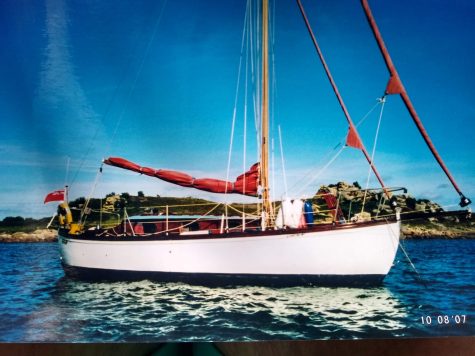
Terpsechore
Terpsechore was built in 1954, she’s a canoed stern Hillard, that Ollie Walker has been rebuilding for the last four years – he say’s it’s still on going!,
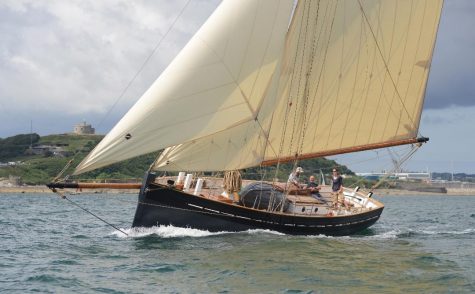
Unity
Unity is a newish 40ft workboat-style gaff rigged cutter, designed by Jon Bray and built by West Country Cutters. Her hull is based on a Mevagissey Lugger. She was launched in 2016 and turned heads at her first festival, Sea Salts and Sail, followed immediately by Brest and Douarnenez. She’s as traditional as it gets: larch on sawn-oak frames, copper and bronze-fastened, including a delightful wood burning stove, with a spacious, very practical interior. She’s fast, looks stylish under full sail and through simple rigging, can be sailed by two.
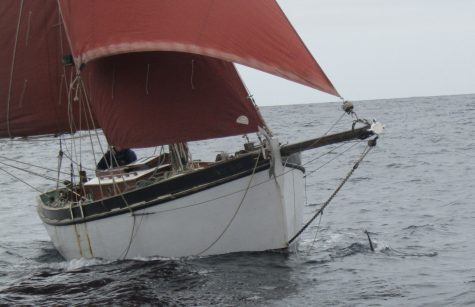
Wendy May
Wendy May is an Olive Mary Maurice Griffiths gaff cutter design. She is 26ft and built with pitch pine on oak frames. Built in 1936 by Williams & Parkinson of Deganwy for Lt. Comdr. R G Wynne-Edwards (RN) of Aberdovey. After the war and during the 1940’s and early 1950’s she was then owned by Lt. Col. A T C Priddle of Twickenham and registered in Portsmouth. The gaff cutter rig sets with 350 sq.ft of plain sail. She is owned by Otter Fisher and based in Penryn.
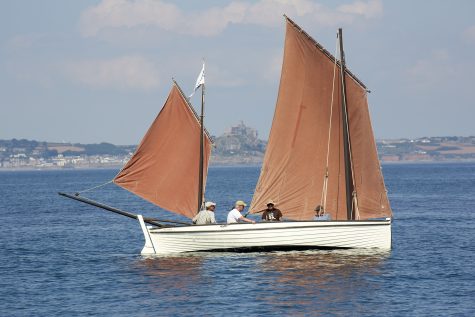
William Paynter
The William Paynter is a Jumbo class lugger, open, double-ended and introduced exclusively to St.Ives during the mid-1880’s. The modern Jumbos are replicas of some of the smallest (20ft 6’ LOA) designed by the renowned boatbuilder, William Paynter. Although rigged in the same way, Jumbos were significantly smaller than the other luggers which earned them their ironic nickname. With all the characteristics of the dipping lug rig in an easily manageable form, the Jumbo is an ideal boat on which to learn. The replicas were researched and built by Jonny Nance of the St.Ives Jumbo Association. www.stivesjumbo.com/


